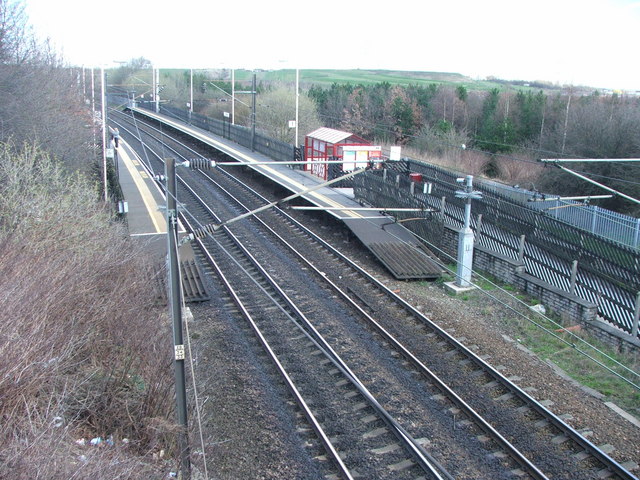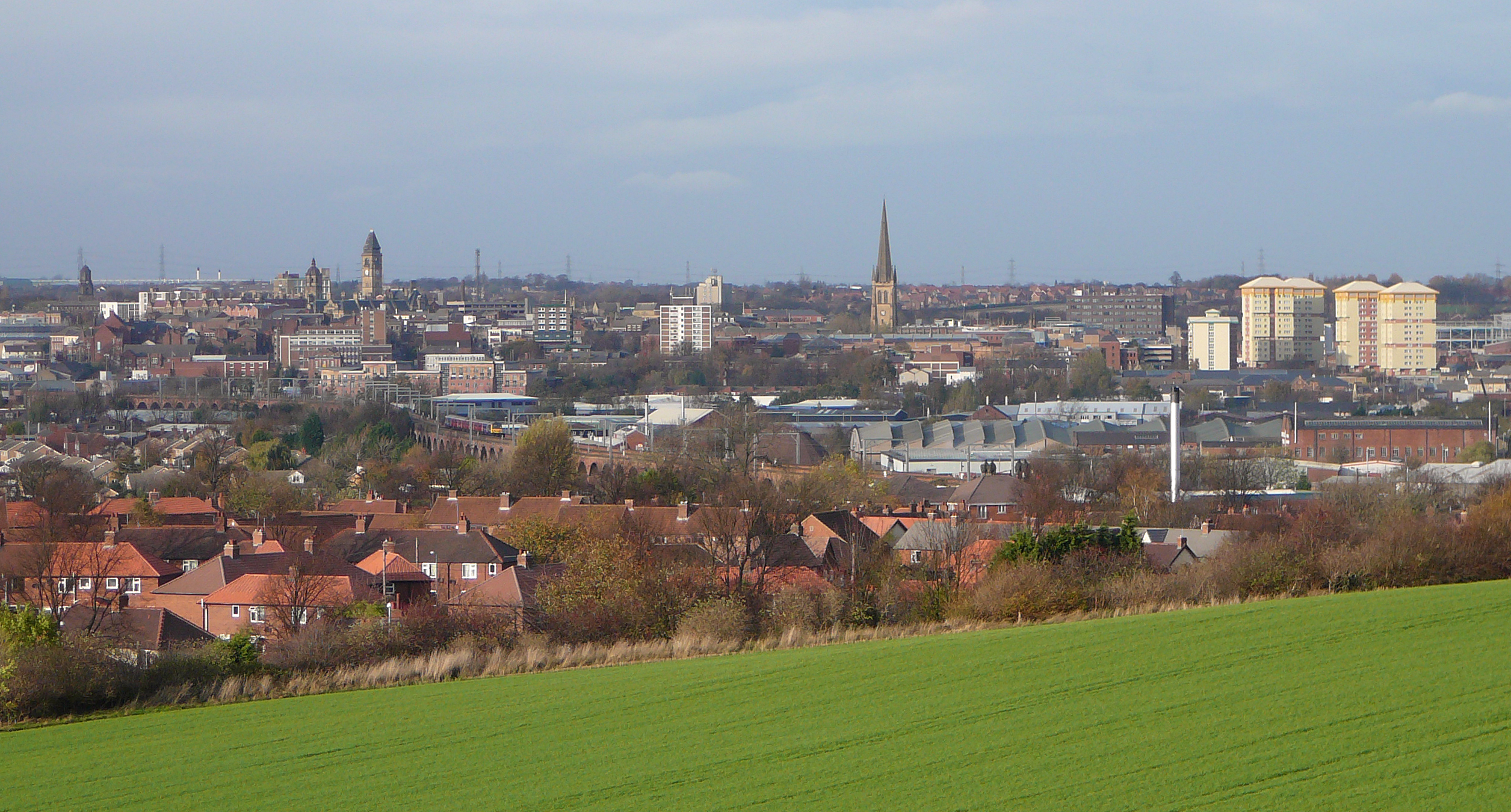|
Alverthorpe Railway Station
Alverthorpe railway station served the village of Alverthorpe near Wakefield in the English county of West Yorkshire. History Opened by the Bradford, Wakefield and Leeds Railway, the station had two platforms. It became part of the London and North Eastern Railway during the Grouping Grouping may refer to: * Muenchian grouping * Principles of grouping * Railways Act 1921, also known as Grouping Act, a reorganisation of the British railway system * Grouping (firearms), the pattern of multiple shots from a sidearm See also ... of 1923. The line then passed on to the Eastern Region of British Railways on nationalisation in 1948, closing a mere six years later. The site today The station was situated on an embankment northeast of Batley Road, after the railway crossed over the road on a bridge near the junction with Grasmere Road. The location is marked by a row of terraced houses. Nothing now remains on site, and the two sides of the triangular junction northeast of ... [...More Info...] [...Related Items...] OR: [Wikipedia] [Google] [Baidu] |
Alverthorpe
Alverthorpe is a suburb of, and former village in Wakefield, West Yorkshire, England. History After the start of the Industrial Revolution woollen and worsted yarns were spun and woollen and worsted cloth woven in the mills and factories that were built in the valley. Rope and twine were also manufactured. In 1830 the township's population was 4,590 and in 1870 it had 1,423 houses and the population had risen to 6,645. A. Talbot & Sons manufactured sweets for many years in a factory with a landmark chimney which was originally a rag mill. The company originated in 1890, selling wholesale groceries from a horse-drawn vehicle, but moved into boiled sweet manufacture when its sweet supplier, John Kay of Flushdyke, retired and gave it his recipes. The company's humbugs, mint imperials, toffees and Yorkshire mixtures became popular throughout Yorkshire and further afield. The Talbots ran the business until the mid-1960s, when it was sold to Victory V lozenges. In the early 20t ... [...More Info...] [...Related Items...] OR: [Wikipedia] [Google] [Baidu] |
Eastern Region Of British Railways
The Eastern Region was a region of British Railways from 1948, whose operating area could be identified from the dark blue signs and colour schemes that adorned its station and other railway buildings. Together with the North Eastern Region (which it absorbed in 1967), it covered most lines of the former London and North Eastern Railway, except in Scotland. By 1988 the Eastern Region had been divided again into the Eastern Region and the new Anglia Region, with the boundary points being between and , and between and . The region ceased to be an operating unit in its own right in the 1980s and was wound up at the end of 1992. History The region was formed in at nationalisation in 1948, mostly out of the former Great Northern, Great Eastern and Great Central lines that were merged into the LNER in 1923. Of all the "Big Four" pre-nationalisation railway companies, the LNER was most in need of significant investment. In the immediate post-war period there was a need to rebuild ... [...More Info...] [...Related Items...] OR: [Wikipedia] [Google] [Baidu] |
Former Great Northern Railway Stations
A former is an object, such as a template, gauge or cutting die, which is used to form something such as a boat's hull. Typically, a former gives shape to a structure that may have complex curvature. A former may become an integral part of the finished structure, as in an aircraft fuselage, or it may be removable, being using in the construction process and then discarded or re-used. Aircraft formers Formers are used in the construction of aircraft fuselage, of which a typical fuselage has a series from the nose to the empennage, typically perpendicular to the longitudinal axis of the aircraft. The primary purpose of formers is to establish the shape of the fuselage and reduce the column length of stringers to prevent instability. Formers are typically attached to longerons, which support the skin of the aircraft. The "former-and-longeron" technique (also called stations and stringers) was adopted from boat construction, and was typical of light aircraft built until the ... [...More Info...] [...Related Items...] OR: [Wikipedia] [Google] [Baidu] |
Wakefield Westgate Railway Station
Wakefield Westgate railway station is a mainline railway station in Wakefield, West Yorkshire, England. It is south of Leeds to the west of the city centre, on the Wakefield Line and Leeds branch of the East Coast Main Line. The first Westgate station opened in 1856 a few years after the town's first station, Wakefield Kirkgate. In 1867, the station was rebuilt on the opposite side of Westgate on the main line between Leeds and Doncaster. British Rail modernised the station in 1967 when large parts of the 19th-century station were demolished and replaced with austere but functional facilities. By the 21st century, there was pressure to modernise the station and between 2009 and 2013 the station was rebuilt and modernised as a result of regeneration efforts focused upon the wider area. On 3 February 2014, the rebuilt station was officially opened. History Early history During 1856, shortly after the spur line from Wakefield's first station, Wakefield Kirkgate was built, th ... [...More Info...] [...Related Items...] OR: [Wikipedia] [Google] [Baidu] |
Outwood Railway Station
Outwood railway station is situated in the Outwood district of Wakefield in West Yorkshire, England. Outwood is the first stop on the Wakefield Line after Leeds for trains going towards Wakefield Westgate, Doncaster and Sheffield. History The original station was opened by the Bradford, Wakefield and Leeds Railway in 1858, and was originally named ''Lofthouse''. This was renamed ''Lofthouse and Outwood'' in July 1865. It closed on 13 June 1960. A different Lofthouse and Outwood station, which was on a different route, opened in 1876 and closed in 1958. The station was reopened on 12 July 1988. Facilities The station is unstaffed and has two wooden platforms with waiting shelters, customer help points, digital display screens, timetable posters and automated train announcements provide running information. Level access to both platforms is via ramps. Services Monday to Saturdays two trains per hour head northbound to Leeds and southbound one train per hour goes to Doncas ... [...More Info...] [...Related Items...] OR: [Wikipedia] [Google] [Baidu] |
Flushdyke Railway Station
Flushdyke was a Great Northern Railway station on Wakefield Road in Flushdyke, West Yorkshire. The station originally opened (as Ossett) on the north side of Wakefield Road on 7 April 1862, was renamed Flushdyke when the later Ossett station opened two years later, and at some date moved to the south side of the road bridge. It was closed from 5 May 1941. Steps from the road led to two side platforms, each with a shelter. References External links Disused railway stations in Wakefield Former Great Northern Railway stations Railway stations in Great Britain opened in 1862 Railway stations in Great Britain closed in 1941 {{Yorkshire-Humber-railstation-stub ... [...More Info...] [...Related Items...] OR: [Wikipedia] [Google] [Baidu] |
Nationalisation
Nationalization (nationalisation in British English) is the process of transforming privately-owned assets into public assets by bringing them under the public ownership of a national government or state. Nationalization usually refers to private assets or to assets owned by lower levels of government (such as municipalities) being transferred to the state. Nationalization contrasts with privatization and with demutualization. When previously nationalized assets are privatized and subsequently returned to public ownership at a later stage, they are said to have undergone renationalization. Industries often subject to nationalization include the commanding heights of the economy – telecommunications, electric power, fossil fuels, railways, airlines, iron ore, media, postal services, banks, and water – though, in many jurisdictions, many such entities have no history of private ownership. Nationalization may occur with or without financial compensation to the former owners. ... [...More Info...] [...Related Items...] OR: [Wikipedia] [Google] [Baidu] |
Railways Act 1921
The Railways Act 1921 (c. 55), also known as the Grouping Act, was an Act of Parliament enacted by the British government and intended to stem the losses being made by many of the country's 120 railway companies, by "grouping" them into four large companies dubbed the " Big Four". This was intended to move the railways away from internal competition, and retain some of the benefits which the country had derived from a government-controlled railway during and after the Great War of 1914–1918. The provisions of the Act took effect from the start of 1923. History The British railway system had been built up by more than a hundred railway companies, large and small, and often, particularly locally, in competition with each other. The parallel railways of the East Midlands and the rivalry between the South Eastern Railway and the London, Brighton and South Coast Railway at Hastings were two examples of such local competition. During the First World War the railways were under st ... [...More Info...] [...Related Items...] OR: [Wikipedia] [Google] [Baidu] |
City Of Wakefield
The City of Wakefield is a local government district with the status of a city and metropolitan borough in West Yorkshire, England. Wakefield, the largest settlement, is the administrative centre of the district. The population of the City of Wakefield at the 2011 Census was 325,837. The district includes the ''Five Towns'' of Normanton, Pontefract, Featherstone, Castleford and Knottingley. Other towns include Ossett, Horbury, Hemsworth, South Kirkby and Moorthorpe and South Elmsall. The city and district are governed by Wakefield Metropolitan District Council from headquarters in County Hall. In 2010, Wakefield was named as the UK's third most musical city by PRS for Music. Economy The economic and physical condition of several of the former mining towns and villages in Wakefield District have started to improve due to the booming economy of Leeds – and an increase in numbers of commuters to the city from the sub-region – and a recognition of undeveloped assets. For i ... [...More Info...] [...Related Items...] OR: [Wikipedia] [Google] [Baidu] |
Bradford, Wakefield And Leeds Railway
The Bradford, Wakefield and Leeds Railway was an independent railway company that built a line between Wakefield and a junction close to Leeds, in Yorkshire, England. It opened its main line in 1857, and was worked by the Great Northern Railway. The line shortened the GNR route to Leeds. The BW&LR later built a branch line from near Wakefield to Batley, opening in stages to 1863. In that year it changed its name to the West Yorkshire Railway, and planned a branch line from Lofthouse to Methley, forming an eastwards link to other companies' lines. It agreed to make the line jointly with the North Eastern Railway and the Lancashire and Yorkshire Railway, and the branch line became the Methley Joint Railway, opening in 1865. In that year the West Yorkshire Railway (former BW&LR) was absorbed by the Great Northern Railway. The original main line is part of the present-day electrically operated Doncaster to Leeds main line. Origins At the conclusion of a Parliamentary struggle, the ... [...More Info...] [...Related Items...] OR: [Wikipedia] [Google] [Baidu] |





